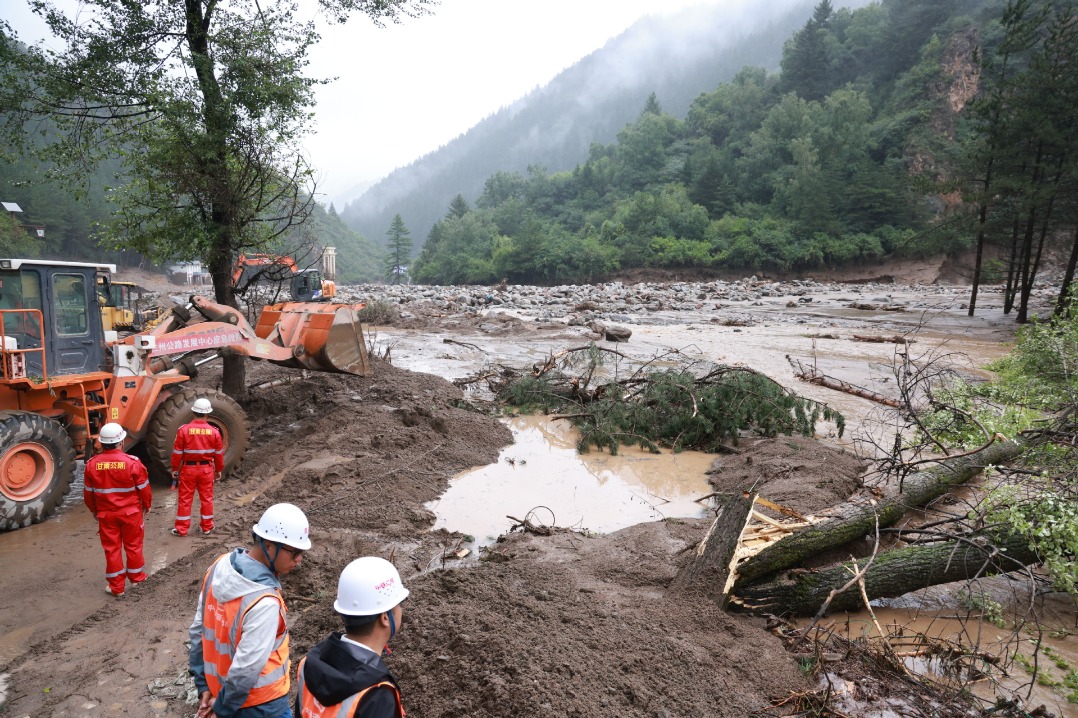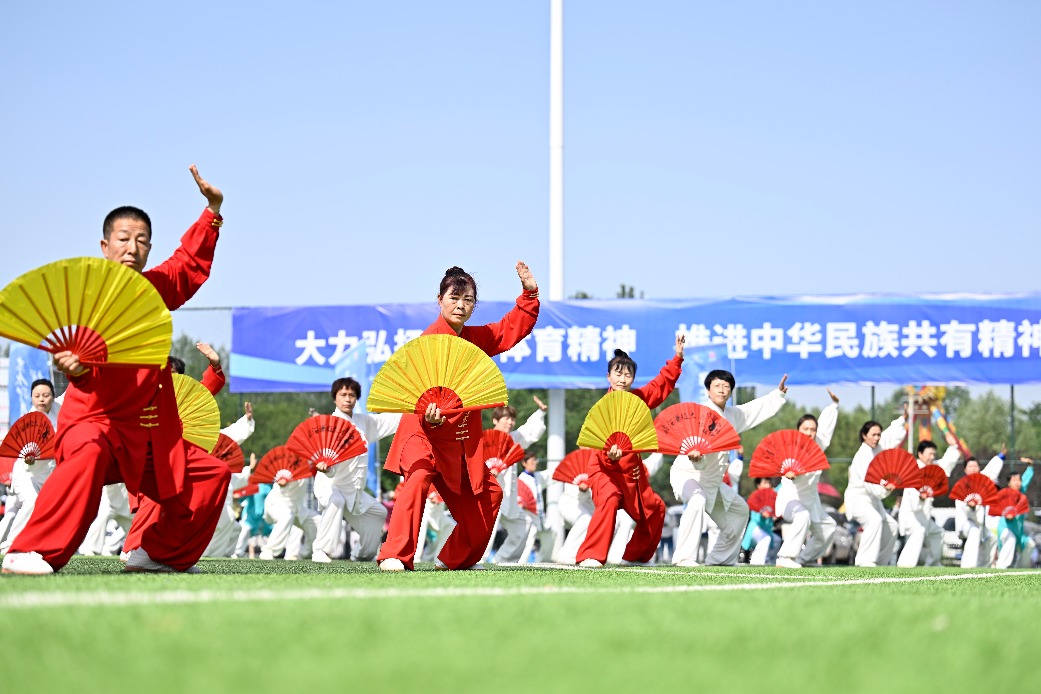Rail project more than just transport

Kenyans should take full advantage of training and technology transfer opportunities
The construction of the $3.8 billion standard gauge railway between Nairobi and Mombasa is the second biggest transport project undertaken by a Chinese construction company in Kenya but it has generated a lot more attention than the Thika Superhighway that was completed in 2012.
To many Kenyans, road construction has become a daily occurrence. However, with the $380 million highway that connects downtown Nairobi and Thika town in the city's northeast, construction professionals marveled at the new technology the Chinese contractors used in presenting a world-class project completed within set timelines.

But the new railway is eagerly awaited. The existing one was completed by the British in 1925. It linked Mombasa with Kampala, Uganda.
Decades later, the railway line is associated with inefficiencies and mismanagement. The cost of doing business has escalated because of expensive transport. It costs between $1,400 and $1,700 to ship a 12-meter container from Dubai to Mombasa. The average cost of transporting the cargo from Mombasa to Kampala is twice as much. This is passed on to consumers, making some products very expensive.
Rail transport has also become unreliable. Passengers ultimately prefer using air or road transport to Mombasa or Kisumu, leaving one less option for the tourism industry.
It was therefore with great excitement that the construction of the modern rail infrastructure was started in 2013. This followed President Uhuru Kenyatta's visit to China in August 2013, when he and President Xi Jinping signed the financing agreement for the project. Construction of the 472-kilometer railway is financed by Exim Bank of China. The work is being done by China Road and Bridge Corp, a subsidiary of China Communications Construction Co.
This will see the upgrading of East African country's transport network, reduce costs and create a great number of jobs to complement Kenya's economic development.
Last year when Chinese Premier Li Keqiang was on a state visit to Kenya, he urged the Chinese project developer to not only diligently develop the infrastructure but also provide their Kenyan counterparts with modern equipment and offer operations and management training to local employees.

In many ways, China Road and Bridge has met its obligations. Reports indicate that it is ahead of schedule and may complete the project in 2017. This is significant progress that would save Kenya money in terms of associated costs from inflation.
The company also launched a skill transfer facility at its campsite at Voi, a southern Kenyan town. The move will greatly improve the technical capability of its local employees. Technology transfer is to take place both onsite and in classrooms. The project is expected to advance the skills of 15,000 semiskilled workers and 400 engineers. That will help the country achieve its Vision 2030 goals.
It also promotes people-to-people exchanges as the locals and foreign workers interact. Moreover, it marks an introduction of Chinese design and standards into our education system. This will help avoid problems caused by technical differences.
In April, construction ground to a halt after Chinese and local engineers differed on standards and designs. According to Kenya Railways Corp, the suspension resulted from unfamiliar methods used by the Chinese to make culverts.
Kenyan engineers use steel while Chinese prefer concrete with minimal to no steel reinforcement. China is known to heavily invest in research, especially in infrastructure development. The contractor is not only working in Kenya but has a global presence.
Kenyans therefore are in a strategic position to absorb new technology. Young Kenyans who have the opportunity to work on this project will be attractive employees to local and international companies scouting for construction contracts in the continent.
But despite the project receiving firm backing from Kenya's national authorities, there has been lukewarm response from local governments. Many of them have not adequately prepared to benefit from this project.
When the Chinese company embarked on a recruitment drive, most of the successful applicants came from Nairobi and western Kenya. This is despite the first phase mostly covering coastal and eastern areas.
Recognizing the deficit in required skills, the governor of Taita Taveta county worked with a local driving school to help constituents with driving skills so as not to miss out on available opportunities.
It was a great relief when the onsite training program was launched in the area. Similar efforts are planned in eight of the other campsites.
One thing, however, that I think the Voi governor has not fully realized is the opportunity accorded by the Chinese presence. It is a troubling fact that most counties have run-down youth polytechnics, which have subsequently led to low skill levels in rural Kenya.
The national government has pledged to inject funds to upgrade these institutions. But it will take time to put them into acceptable modern conditions. Local governments such as Voi should step up to the task of investing in modern infrastructure where Chinese construction technology can be learnt.
Programs for engineers, plumbers, carpenters and lab technicians could be launched to prepare more Kenyans for big construction projects in Kenya and beyond. Instead of setting up satellite schools everywhere, this could be the central focal point where Africans could come to learn and witness Chinese technology. It would be cheaper in the long run and would immensely benefit the county and the country.
Voi still largely depends on tourism, owing to its proximity to the Tsavo national parks. But with the industry experiencing mixed fortunes, so goes the economic and social well-being of the county.
A technical institution would serve as a steady income earner. It would encourage real estate construction to accommodate students and scholars.
This would cultivate a steady pool of talent to serve Chinese companies working in the continent. Chinese contractors have always raised concerns about the low skill levels of African laborers. Other cultural barriers such as diligence and language have negatively affected working relations between the visitors and the locals. The training institution would be a great way to help bridge the divide.
Importing labor from China not only raises operational costs but also does not sit well with African governments, providing a clear incentive for Chinese companies to hire locals.
Having a training institution that breaks away from British and US standards would give Kenyan youths a better chance of working with various international contractors.
The institution could also serve as a center for the spread of Chinese culture and language. Just as Confucius institutes have been established at universities, this could be a convenient point for rural Kenya to interact with the culture.
Four Confucius institutes and one Confucius classroom have been set up in the country, with each hosting institution boasting unique features and advantages. The technical college could bring into full play the superiority of Chinese construction technology into Africa.
If the coastal counties cannot spot this early opportunity, then other counties should.
The author is a freelance journalist in Kenya. The views do not necessarily reflect those of China Daily.
(China Daily Africa Weekly 09/25/2015 page9)
Today's Top News
- Consumption gains steam, drives growth
- Summit seen as opportunity for warming Sino-Indian ties
- Foshan's steps to curb chikungunya paying off
- Aruban karate athlete hogs Chengdu spotlight
- Reopened roads to speed up search for flood victims
- Welcome extended to Modi, but prudence will prevail






























